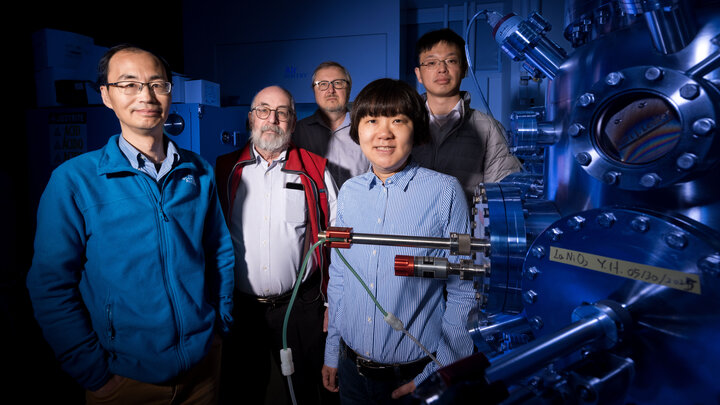Robert J. Hardy was born on January 26, 1935 in Port Angeles, Washington, and passed away on June 20, 2017 in Lincoln, Nebraska. He received his B.S. degree in 1956 from Reed College in Portland, Oregon, and his Ph.D. degree from Lehigh University in Bethlehem, Pennsylvania, in 1962. He continued working for his thesis advisor, Professor J.A. McLennan, for a year and then joined the Center for Research and Advanced Studies in Mexico City for the next year. During 1965-1967, he was a Research Associate at the University of Oregon with Professor G.H. Wannier who introduced the famous Wannier functions. He joined the Department of Physics and Astronomy at the University of Nebraska–Lincoln as an Assistant Professor in 1967 and was promoted to Full Professor in 1976. He remained at the University of Nebraska until his retirement in 2006. He served as the vice chair of the department during 1984-1989. He spent his sabbatical year (1977-78) at the University of Bristol, England, and the University of California, Los Angeles. He spent several summers as a visiting scientist at Lawrence Livermore National Laboratory (LLNL), Livermore, California.
Bob’s students remember him as "a patient teacher" and a "wonderful person and a brilliant physicist." He was a "mentor and friend" who had a lasting impact. He was a dedicated, careful instructor, starting with the simplest thoughtfully designed problems and building incrementally from there. This culminated in him receiving the university-wide Distinguished Teaching Award in 1979.
Bob was a theoretical physicist passionate about thermal physics and its applications to study structural, mechanical, and transport properties of solids. Bob enjoyed discussing thermodynamic principles at length over a bagel and coffee at a neighborhood restaurant, or while walking to and from his daily bus ride. Because of this passion he participated in the June 2000 Gordon Conference on Statistical & Thermal Physics that explored how research in physics and physics education can be used to improve the teaching of physics. He contributed the talk "Why not use 'ordinary' mathematics when teaching thermodynamics?" After teaching for several years, he started writing a book on the subject. When one of us (Ch.B.) joined the department, they started having lunch discussions about the book and Ch.B. appreciated Bob’s approach to the subject. After a couple of years of these discussions, they published the book in 2014 entitled "Thermodynamics and Statistical Mechanics: An Integrated Approach" with John Wiley and Sons.
With his six Ph. D. students and several colleagues, Bob developed theories to study thermodynamic properties and applied them to many materials. He collaborated with Arnold Karo on the study of shock waves at LLNL. He developed some fundamental formulas in shock physics, as indicated by his paper "Formulas for determining local properties in molecular‐dynamics simulations: Shock waves" (The Journal of Chemical Physics 76, 622 (1982)). His formulas for the conversion of discrete to continuum properties are still often cited in the field of shock waves and detonations, which he contributed to for several years. He was an author on several papers at meetings of the APS Topical Group on Shock Compression of Condensed Matter. Bob was a member and one of the Outstanding Referees of the American Physical Society.
Bob Hardy was exacting, thorough, and disciplined. He enjoyed steam trains, classic cars, wooden boats, and history from the Roman era to World War II. He seemingly never hurried, had an ironic sense of humor, and regularly reflected a love for his family.
Christian Binek
Sitaram Jaswal
David Swanson
University of Nebraska, Lincoln, Nebraska




